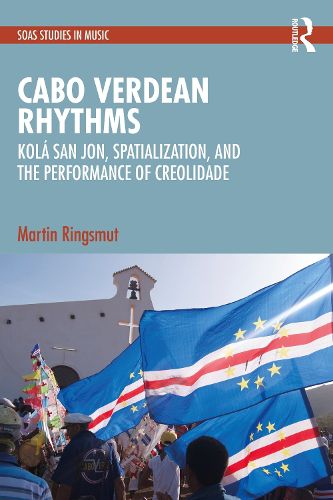Readings Newsletter
Become a Readings Member to make your shopping experience even easier.
Sign in or sign up for free!
You’re not far away from qualifying for FREE standard shipping within Australia
You’ve qualified for FREE standard shipping within Australia
The cart is loading…






Cabo Verdean Rhythms examines the rhythms, movements and performances of Kola San Jon, a performative tradition central to Cabo Verde's festas juninas, as a lens for understanding the ongoing negotiations of social and cultural boundaries in Cabo Verde.
The book examines Kola San Jon as a site of spatialization and creolization, processes that are closely linked to the colonial and post-colonial histories of the archipelago. Beginning with an examination of the concept of Creolidade as a dynamic and contested process, the book goes on to trace the historical connections between the islands of Sao Vicente and Santo Antao, exploring how these inter-island relationships have shaped the Kola San Jon tradition. It analyzes the construction of identity and a sense of belonging through drumming and dance, and considers processional performances as key moments of spatial and social organization. Through the concept of ritual failure, the book reflects on the fragility and contested nature of these practices.
Bringing together the interdisciplinary fields of ethnomusicology, postcolonialism and spatial politics, Cabo Verdean Rhythms offers novel perspectives for understanding the nexus of sound, space, and identity which will be of interest to both researchers and postgraduate students.
$9.00 standard shipping within Australia
FREE standard shipping within Australia for orders over $100.00
Express & International shipping calculated at checkout
Cabo Verdean Rhythms examines the rhythms, movements and performances of Kola San Jon, a performative tradition central to Cabo Verde's festas juninas, as a lens for understanding the ongoing negotiations of social and cultural boundaries in Cabo Verde.
The book examines Kola San Jon as a site of spatialization and creolization, processes that are closely linked to the colonial and post-colonial histories of the archipelago. Beginning with an examination of the concept of Creolidade as a dynamic and contested process, the book goes on to trace the historical connections between the islands of Sao Vicente and Santo Antao, exploring how these inter-island relationships have shaped the Kola San Jon tradition. It analyzes the construction of identity and a sense of belonging through drumming and dance, and considers processional performances as key moments of spatial and social organization. Through the concept of ritual failure, the book reflects on the fragility and contested nature of these practices.
Bringing together the interdisciplinary fields of ethnomusicology, postcolonialism and spatial politics, Cabo Verdean Rhythms offers novel perspectives for understanding the nexus of sound, space, and identity which will be of interest to both researchers and postgraduate students.